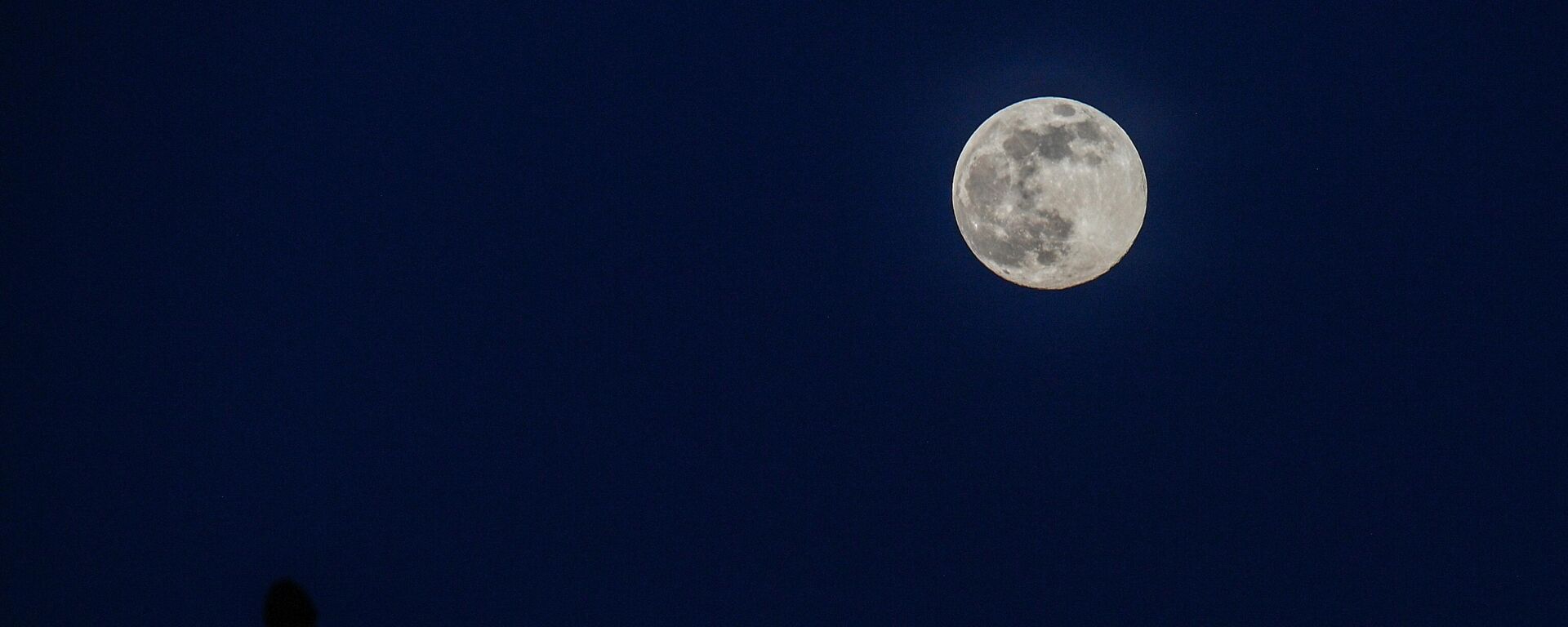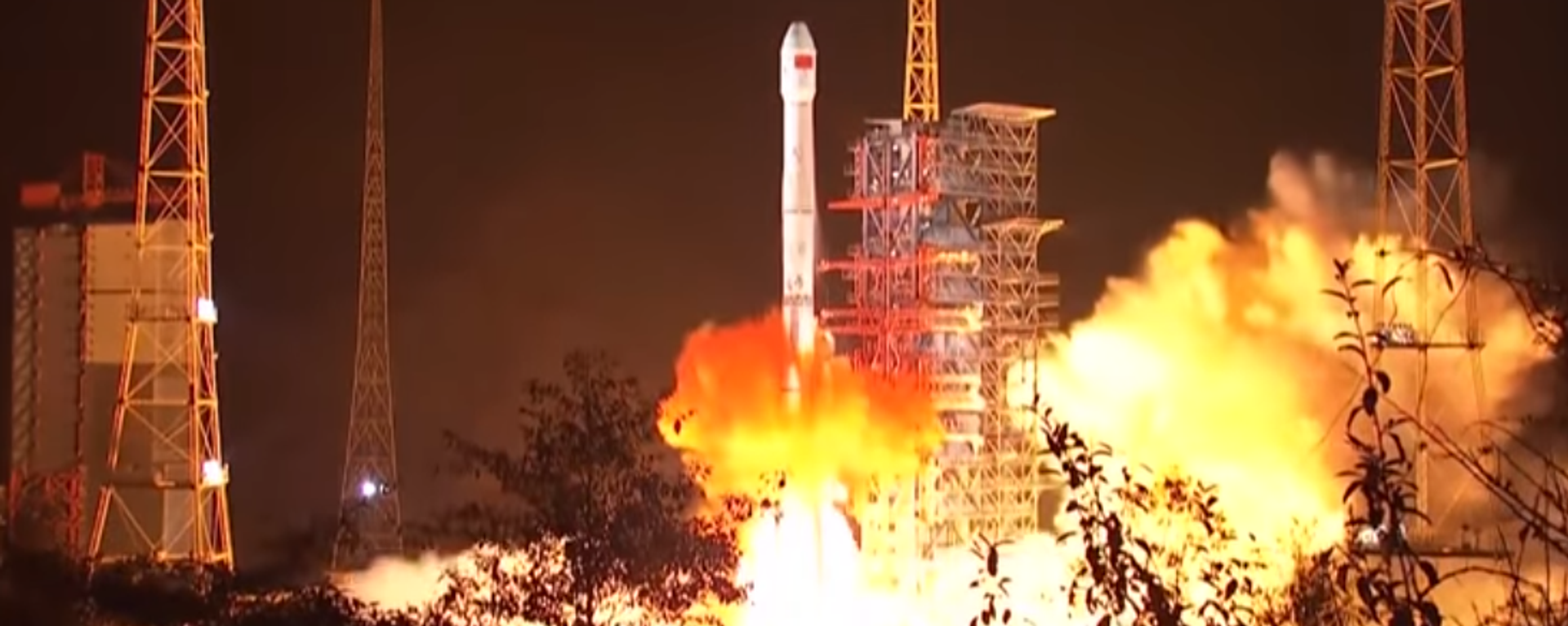https://sputnikglobe.com/20231005/chinas-latest-lunar-expedition-targets-far-side-of-the-moon-in-2024-1113946594.html
China's Latest Lunar Expedition Targets Far Side of the Moon In 2024
China's Latest Lunar Expedition Targets Far Side of the Moon In 2024
Sputnik International
China's ambitious moon exploration, including Chang'e-6, set to launch in 2024, marks a pivotal step towards global collaboration in studying the far ends of its swaths. With plans for a research outpost by 2040, China's space endeavors solidify its position as a key player in lunar exploration.
2023-10-05T12:05+0000
2023-10-05T12:05+0000
2023-10-05T12:05+0000
world
science & tech
newsfeed
china
beijing
baku
china national space administration (cnsa)
chinese national space administration (cnsa)
cubesat
national space administration
https://cdn1.img.sputnikglobe.com/img/07e6/01/0f/1092276202_0:0:1920:1080_1920x0_80_0_0_7cfc44439ec79e6ecc5718c4b2944299.jpg
China's declared intention to extract specimens from the surface of hitherto uncharted regions of the Moon, is going according to plan, according to official sources. The anticipated launch for this mission is set for 2024. This achievement aligns with Beijing's daring goal to dispatch astronauts on lunar missions in the next decade, forming the groundwork for a globally collaborative research base on the moon.In a recent report, China's National Space Administration (CNSA) announced they are making progress on the imminent Chang'e-6 lunar venture. The agency also disclosed that the crucial relay satellite for this mission is slated for deployment between January and June 2024.Anticipating the 2028 Chang'e-8 moon expedition, the CNSA makes collaboration with other nations a priority. Chinese authorities highlighted this commitment at the recent International Astronautical Congress held in Baku, Azerbaijan. They emphasized how a robust global partnership is essential for the success of the uncrewed lunar exploration mission.China's space mission is hoping that the 2028 mission will be open to collaborative endeavors, according to an official statement on the agency's website. This signals a readiness to combine forces for deploying spacecraft, coordinating their orbits, sharing resources between them, and working together on exploring the moon's surface.Furthermore, Chinese media sources indicate that the spacecraft will have room for 200kg of scientific instruments from other countries, allowing for international contributors to participate in lunar research.China envisages the planned lunar explorations, including Chang'e-7 scheduled for the next three years, would give insights into establishing a long-term multinational research outpost by 2040 at the lunar South Pole. This initiative is a crucial aspect of China's broader thrust to consolidate its standing as a significant party in space exploration.China's space projects have been on the rise in the past few years. The deployment of a rover to the moon's unexplored expanses in 2019 was a pivotal moment. Building on this success, the assembly of the Tiangong space station in orbit last year further solidified China's position in the cosmos. The nation is poised for another historic leap - a crewed mission slated to position it as the second country to achieve this feat, with a firm target of 2030.Thus far, reports indicate that a few nations have committed to teaming up with China's anticipated lunar research station. Among early bidders are renowned players such as Russia. According to Chinese media sources, Venezuela and South Africa are also on the list.Last Friday, the CNSA revealed plans for the Chang'e-6 mission. This mission is poised to venture over the enigmatic depths of the moon's remote hemisphere. After 10 years of concentrated exploration on the Earth-facing side, this fresh endeavor promises to deepen our comprehension of the lunar surface. It's worth noting that this announcement coincided with the Mid-Autumn Festival, a cultural celebration in China steeped in lunar symbolism.Hu Hao, a senior official involved in the Chang'e-6 mission, explained that acquiring such samples would facilitate scientists in furthering their studies concerning the far side and conducting analysis on the soil to enrich their understanding of the moon.According to Hu, the spacecraft's designated landing site is the remote expanse of the South Pole-Aitken Basin, chosen strategically for its potential yield of rock and dust specimens. This unique geological facet of the moon holds substantial scientific significance.The side of the moon which has so far been veiled from our sight, unfurls a canvas of craters. Yet, in stark contrast to the near side, or the traces of age-old volcanic activity—an anomaly that persists as a source of fascination for scientists.The CNSA shared that China's Chang’e-6 mission is working with four global partners to use state-of-the-art instruments and satellites. These include a special detector from the European Space Agency, a sophisticated tool for detecting radon gas from France, a small satellite called CubeSat from Pakistan, and a critical laser tool from Italy that helps with radar measurements. This mission represents a significant advance in lunar exploration, since the success of the Chang’e-5 mission that brought back moon rocks and soil samples in December 2020.
https://sputnikglobe.com/20230825/russia-could-send-new-mission-to-south-pole-of-moon-in-2025-2026---roscosmos-1112879760.html
https://sputnikglobe.com/20181208/china-lunar-mission-research-1070510587.html
china
beijing
baku
Sputnik International
feedback@sputniknews.com
+74956456601
MIA „Rossiya Segodnya“
2023
Chimauchem Nwosu
https://cdn1.img.sputnikglobe.com/img/07e7/09/01/1113046371_0:99:1536:1635_100x100_80_0_0_9c5c627283eca931c39fe4852bbb301c.jpg
Chimauchem Nwosu
https://cdn1.img.sputnikglobe.com/img/07e7/09/01/1113046371_0:99:1536:1635_100x100_80_0_0_9c5c627283eca931c39fe4852bbb301c.jpg
News
en_EN
Sputnik International
feedback@sputniknews.com
+74956456601
MIA „Rossiya Segodnya“
Sputnik International
feedback@sputniknews.com
+74956456601
MIA „Rossiya Segodnya“
Chimauchem Nwosu
https://cdn1.img.sputnikglobe.com/img/07e7/09/01/1113046371_0:99:1536:1635_100x100_80_0_0_9c5c627283eca931c39fe4852bbb301c.jpg
china, moon mission, chang'e-6, lunar exploration, cnsa, national space administration, chang'e-8, uncrewed lunar mission, international astronautical congress, baku, azerbaijan, spacecraft, lunar research, scientific instruments, lunar south pole, tiangong space station, crewed mission, global integration, space exploration, russia, venezuela, south africa, lunar research station, chang'e-5, moon rocks, soil samples, chang'e-7, chang'e-8, chang'e-6 mission, south pole-aitken basin, european space agency, radon gas detector, france, cubesat, pakistan, laser tool, italy.
china, moon mission, chang'e-6, lunar exploration, cnsa, national space administration, chang'e-8, uncrewed lunar mission, international astronautical congress, baku, azerbaijan, spacecraft, lunar research, scientific instruments, lunar south pole, tiangong space station, crewed mission, global integration, space exploration, russia, venezuela, south africa, lunar research station, chang'e-5, moon rocks, soil samples, chang'e-7, chang'e-8, chang'e-6 mission, south pole-aitken basin, european space agency, radon gas detector, france, cubesat, pakistan, laser tool, italy.
China's declared intention to
extract specimens from the surface of hitherto uncharted regions of the Moon, is going according to plan, according to official sources. The anticipated launch for this mission is set for 2024. This achievement aligns with Beijing's daring goal to dispatch astronauts on lunar missions in the next decade, forming the groundwork for a globally collaborative
research base on the moon.In a recent report, China's National Space Administration (CNSA) announced they are making progress on the imminent Chang'e-6 lunar venture. The agency also disclosed that the crucial relay satellite for this mission is slated for deployment between January and June 2024.
Anticipating the 2028 Chang'e-8 moon expedition, the CNSA makes collaboration with other nations a priority. Chinese authorities
highlighted this commitment at the recent International Astronautical Congress held in Baku, Azerbaijan. They emphasized how a robust global partnership is essential for the success of the uncrewed lunar exploration mission.
China's space mission is hoping that the 2028 mission will be open to collaborative endeavors, according to an official
statement on the agency's website. This signals a readiness to combine forces for deploying spacecraft, coordinating their orbits, sharing resources between them, and working together on exploring the moon's surface.
Furthermore, Chinese media sources indicate that the spacecraft will have room for 200kg of scientific instruments from other countries, allowing for international contributors to participate in lunar research.
China envisages the planned lunar explorations, including Chang'e-7 scheduled for the next three years, would give insights into establishing a long-term multinational research outpost by 2040 at the lunar South Pole. This initiative is a crucial aspect of China's broader thrust to consolidate its standing as a significant party in space exploration.

25 August 2023, 10:20 GMT
China's space projects have been on the rise in the past few years. The deployment of a rover to the moon's unexplored expanses in 2019 was a pivotal moment. Building on this success, the assembly of the Tiangong space station in orbit last year further solidified China's position in the cosmos. The nation is poised for another historic leap - a crewed mission slated to position it as the second country to achieve this feat, with a firm target of 2030.
Thus far, reports indicate that a few nations have committed to teaming up with China's anticipated lunar research station. Among early bidders are renowned players such as Russia. According to Chinese media sources,
Venezuela and South Africa are also on the list.
Last Friday, the CNSA revealed plans for the Chang'e-6 mission. This mission is poised to venture over the enigmatic depths of the moon's remote hemisphere. After 10 years of concentrated exploration on the Earth-facing side, this fresh endeavor promises to deepen our comprehension of the lunar surface. It's worth noting that this announcement coincided with the Mid-Autumn Festival, a cultural celebration in China steeped in lunar symbolism.
Hu Hao, a senior official involved in the Chang'e-6 mission, explained that acquiring such samples would facilitate scientists in furthering their studies concerning the far side and conducting analysis on the soil to enrich their understanding of the moon.

8 December 2018, 11:40 GMT
According to Hu, the spacecraft's designated landing site is the remote expanse of the South Pole-Aitken Basin, chosen strategically for its potential yield of rock and dust specimens. This unique geological facet of the moon holds substantial scientific significance.
The side of the moon which has so far been veiled from our sight, unfurls a canvas of
craters. Yet, in stark contrast to the near side, or the
traces of age-old volcanic activity—an anomaly that persists as a source of fascination for scientists.
The CNSA shared that China's Chang’e-6 mission is working with four global partners to use state-of-the-art instruments and satellites. These include a special detector from the European Space Agency, a sophisticated tool for detecting radon gas from France, a small satellite called CubeSat from Pakistan, and a critical laser tool from Italy that helps with radar measurements. This mission represents a significant advance in lunar exploration, since the success of the Chang’e-5 mission that brought back moon rocks and soil samples in December 2020.





